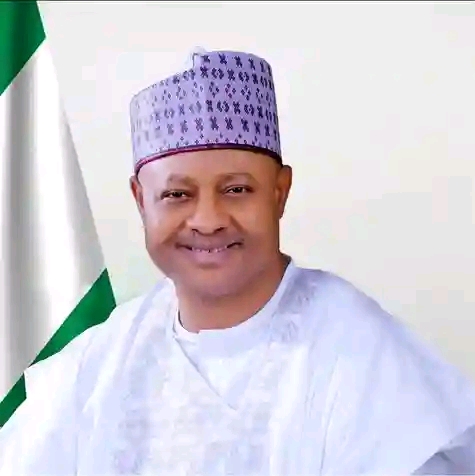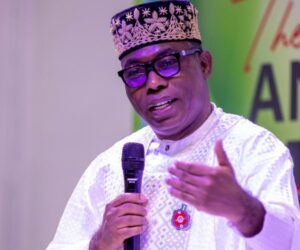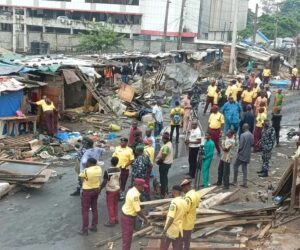For more than a decade, Kaduna was a landscape of fear; a geography etched by violence and silence. The highways that once carried trade and laughter became corridors of dread; the farmlands that had nourished generations were abandoned to weeds and whispers. In communities from Birnin Gwari to Kauru, the air was thick with grief: bandit raids, kidnappings, and reprisal attacks had reduced life to a fragile calculation between escape and endurance. It was a state at war with itself, where force met force, and neither side truly won.
For years, the official response followed a familiar pattern. The state deployed troops, armour, and drones, determined to impose peace by might. But this kinetic approach, while sometimes necessary, proved insufficient. It addressed symptoms without touching the infection. Behind the gunfire lay deeper afflictions: poverty, idleness, exclusion, and the long unhealed wounds of historical grievance. Violence thrived not merely because weapons were plentiful, but because hope was scarce. The crisis in Kaduna, like those in its neighbouring states, was the story of neglect and despair made combustible by arms.
In 2023, a different rhythm began to stir. A new administration under the able leadership of Governor Uba Sani, reimagined security not as a contest of strength but as a reconstruction of trust. The pivot was subtle yet radical: to move from reaction to prevention, from coercion to inclusion, from fear to faith. It was the embrace of the non-kinetic, the recognition that true peace is not imposed; it is cultivated.
This approach did not mean appeasement or negotiation with criminals. It meant confronting the conditions that breed them. It meant understanding that every uneducated child, every unemployed youth, every neglected village is a potential fracture in the edifice of peace. Non-kinetic security demanded investment in people, not merely in weapons: schools instead of barracks, skills instead of slogans, livelihoods instead of lamentations. It drew from the principle that a society that feeds, educates, and engages its citizens fortifies itself far more effectively than one that merely patrols them.
The strategy intertwined disarmament and development, dialogue and dignity. Communities once alienated from the state began to see government not as a distant authority but as a partner in survival. Traditional rulers, religious leaders, youth groups, and women’s associations were drawn into the process of mediation and trust-building. In villages that had known nothing but fear, reconciliation meetings replaced reprisals. Markets reopened. Roads long closed by terror came alive again. The herder and the farmer, symbols of a broken coexistence, began torediscover the logic of mutual dependence.
The transformation was gradual but palpable. What had once been pockets of perpetual hostility softened into zones of cautious peace. Displaced families returned to rebuild their homes. Farming resumed, drawing the land back from the edge of desolation. Food production revived, prices stabilised, and rural economies, long parched by conflict, began to breathe again. What the gun could not achieve, dialogue and opportunity quietly delivered.
This renewal was not accidental. It was sustained by deliberate policy choices that placed human capital at the centre of governance. Education became a weapon against hopelessness: new schools were built, old ones renovated, teachers retrained, and fees reduced to ensure that poverty no longer locked children out of classrooms. By giving young people access to knowledge and purpose, the state diffused one of the most dangerous fuels of violence, idleness. In the same breath, investments in healthcare, rural infrastructure, and social welfare restored the broken trust between citizens and the state. Hospitals once neglected were revived; communities once forgotten began to feel seen again.
When people perceive government as present and responsive, their allegiance shifts from armed groups to institutions. It is this psychological transformation, this subtle recalibration of faith in governance, that forms the soul of non-kinetic security. Force may compel obedience; fairness inspires loyalty.
Kaduna’s quiet success carries an unspoken rebuke to the rest of the region. In the northwest, where conflict often feels intractable, the lesson is stark: militarisation without social investment is a revolving door. States that spend fortunes on weapons but little on welfare will continue to fight ghosts, for every defeated insurgent is replaced by another disillusioned recruit. But where governance listens and delivers, the cycle begins to break. Poverty ceases to be destiny; alienation ceases to be an identity.
The return of peace has also redefined the state’s image beyond its borders. Where international advisories once marked Kaduna as perilous, renewed confidence has begun to alter that narrative. The reclassification from “red” to “amber” by foreign partners signifies more than a bureaucratic change; it is a recognition that stability is returning, that a society once written off is writing itself anew.
Still, the journey is far from complete. The roots of insecurity run deep, intertwined with climate pressures, population growth, and a history of uneven development. Yet Kaduna’s experience shows that these challenges are not immovable. What was once an ungovernable crisis is yielding to the patient work of inclusion under Governor Uba Sani. The approach may lack the spectacle of military parades, but its victories, measured in reopened schools, resettled villages, and reclaimed roads, are no less profound.
The enduring lesson is that peace is not an event but an ecosystem. It requires not only the silencing of guns but the symphony of opportunity, fairness, and shared purpose. Development and security are not parallel tracks; they are one road, pavedby justice and sustained by trust. The farmer who plants again, the child who returns to class, the trader who reopens her stall, these are the true sentinels of a secure society.
Kaduna has shown that a state can fight not just with soldiers but with teachers, doctors, artisans, and mediators. That peace can be built not by decree but by design. That the surest way to disarm a man is to give him a reason to live unarmed.
In the end, the Kaduna story is less about the defeat of bandits than the triumph of vision. It is the quiet revolution of a government that chose to see its people not as subjects to be secured, but as citizens to be empowered. And in that choice lies a lesson for every state still trapped in the shadows of conflict: that the path to lasting peace is not paved in fear, but in faith-faith in the people, in justice, and in the slow, steady power of human development.
Adamu Lawal resides in Bambari Crescent, Wuse Zone 7, Abuja.








